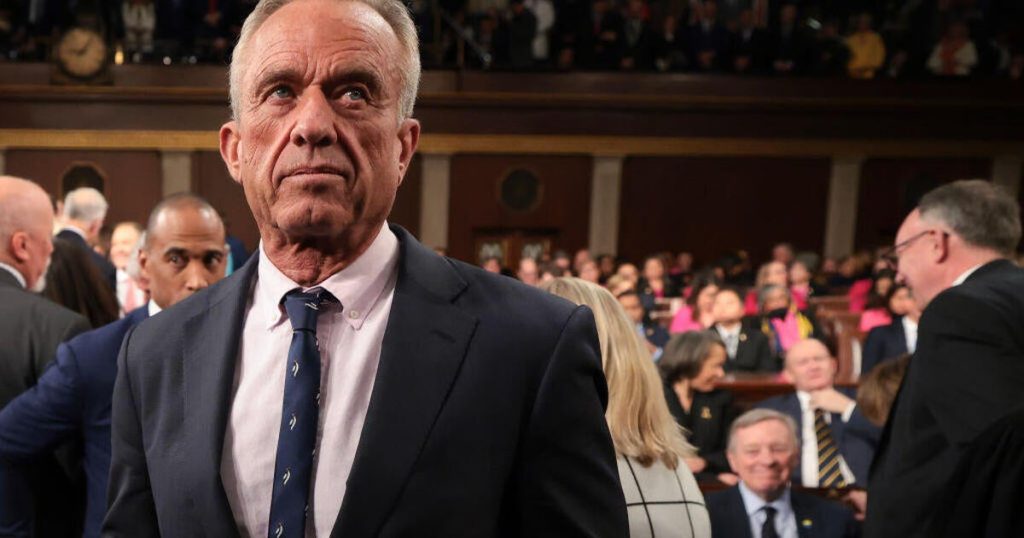In a significant move aimed at reducing the size of the federal workforce, the U.S. Department of Health and Human Services (HHS) has offered its employees a voluntary separation incentive of $25,000. This offer comes as part of broader initiatives under the Trump administration’s effort to shrink federal jobs and control government spending. Employees have until March 14 to respond to the offer, amidst ongoing discussions about the impacts of potential layoffs and current public health challenges.
| Article Subheadings |
|---|
| 1) Voluntary Separation Incentive Offered |
| 2) Context of Federal Job Cuts |
| 3) Impact on Public Health Operations |
| 4) Previous Initiatives Under the Trump Administration |
| 5) Future of Federal Workforce |
Voluntary Separation Incentive Offered
The HHS has formally notified all of its employees about the option to voluntarily resign for a lucrative payment of $25,000. This program is designed to incentivize employees to leave voluntarily, thereby streamlining the department’s workforce as part of ongoing optimization efforts. The employees are required to respond by March 14, providing a limited timeframe to consider the implications of the offer. This initiative also reflects a broader trend within the federal government aimed at reducing operational costs.
Context of Federal Job Cuts
This latest initiative is framed within the context of substantial federal workforce reduction efforts, propelled by the administration’s Department of Government Efficiency (DOGE), which is overseeing significant budget trims across various agencies. A staggering figure of over 62,200 job cuts was reported in February alone, marking the highest level of layoffs since July 2020. These cuts are not isolated to HHS; rather, they are part of a systematic approach to reduce government employee numbers and enhance fiscal efficiency. This pattern of cuts is likely to continue as the administration seeks to balance the budget and minimize excess federal spending.
Impact on Public Health Operations
The implications of these buyouts could directly affect public health initiatives, particularly at a time when the HHS grapples with critical health challenges such as flu outbreaks and the resurgence of measles in communities. The HHS plays an essential role, overseeing major agencies that influence healthcare delivery across the nation, including the FDA, CDC, and the NIH. The potential for staffing shortages raises important questions regarding the capacity of these agencies to respond to urgent health crises. The department, led by Secretary Robert F. Kennedy Jr., has the critical task of navigating these difficulties while ensuring that public health remains prioritized.
Previous Initiatives Under the Trump Administration
The Trump administration’s approach to workforce management is not new; it includes previous strategies such as deferred resignations offered to over two million civilian federal workers immediately following the transition in January. Such resignations allowed employees to receive compensation without an obligation to work through September. The offer was accepted by approximately 75,000 workers, but it was embroiled in legal challenges. This history illustrates a pattern of incentivizing departures and restructuring existing workforce dynamics in a bid to achieve efficiency and economic prudence.
Future of Federal Workforce
The ongoing restructuring of the federal workforce raises critical questions about its future. Many employees are left contemplating their positions amid significant fluctuations in federal employment policies and the overarching political landscape. The effectiveness of such initiatives will be closely observed as they unfold, especially in light of essential services provided by agencies like HHS. Moving forward, both public health and administrative transparency will be vital to ensuring that the workforce is equipped to handle existing and emerging health crises.
| No. | Key Points |
|---|---|
| 1 | HHS is offering $25,000 for voluntary separation for employees. |
| 2 | Over 62,200 federal job cuts were announced in February. |
| 3 | HHS faces health challenges amid potential staffing shortages. |
| 4 | Previous workforce management strategies include deferred resignations. |
| 5 | Future federal workforce restructuring impacts public health capability. |
Summary
The current voluntary separation incentive offered to HHS employees is emblematic of the ongoing effort to streamline the federal workforce as part of broader budgetary constraints. As the agency embarks on this notable restructuring, the potential repercussions on public health initiatives and services cannot be overlooked. The next few months will be crucial in determining how these changes will shape the future of federal employment and the government’s response to pressing health challenges.
Frequently Asked Questions
Question: What does the voluntary separation incentive entail?
The voluntary separation incentive offers employees a payment of $25,000 to resign, with a deadline for responses set for March 14.
Question: How many job cuts were announced by federal agencies?
In February, more than 62,200 job cuts were reported across federal agencies, marking a significant rise in layoffs within the federal workforce.
Question: What are some potential impacts of these separations on public health?
The separations may lead to staffing shortages within HHS, potentially hindering the agency’s ability to effectively respond to ongoing public health issues, like outbreaks of flu and measles.


